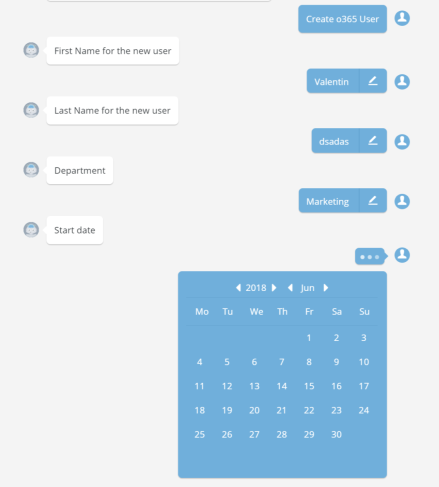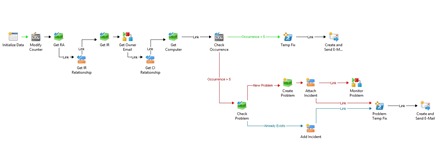It’s amazing that in 2018 I still get Orchestrator questions, so thank you to everyone who appreciated my small bits of work.
While I haven’t posted anything for years, I’m still very much involved in this space and I was lucky enough to start something that can take these ideas to the next level.
I absolutely loved Orchestrator, even with all its bugs and shortcomings. I think it was a great idea. Actually, the whole System Center stack was such a great story:
- with CIs coming from AD and SCCM (even SCOM);
- and alerts opening ticket from SCOM;
- and the integration between SCORCH and SCSM.
If only SCSM wasn’t so slow and complex, forcing you through the ITIL nomenclature. I’ve yet to see someone actually implementing ITIL right and not just cherry picking whatever they feel most comfortable with.
So what have I done since?
For a while I tried to live with SMA and Windows Azure Pack. Then I was lucky enough to get the chance to actually work on this problem.
Together with some great guys we co-founded a company that’s trying to make automation easy to build, easy to manage and – most importantly – friendly for the end user. Our approach enables the automation not only of IT processes, but of any process. Think about it as a lightweight RPA (Robotic Process Automation).
How do you build automations? With PowerShell. Let me explain:
- What if you write the PowerShell script – say for onboarding a user – then publish it in Azure Automation. And when the end user formulates the request (in natural language) she sees this:

- As you see, we use a conversational UI as the driver (let’s say a bot) along with some clever tricks to match what the user writes with the correct automation and to ask for the input parameters in a natural, user-friendly way.
- Here’s our website nibo.ai, and here are some of our blogs: https://blog.nibo.ai. Email us 📧 if you are interested in a demo.
Cool, but with it work with our initial investment in SCSM?
Sadly, no.
I did try that initially. I wasted a whole year on it. But you just can’t fight it, it’s too slow, and even with caching and all sorts of other tricks you can only get so far. I also wanted to simplify the whole idea a bit, because for most companies having a service catalog à la ITIL (Automation → Activity → Request offering → Service offering) is overkill.
No SCSM, no ITIL, so now what?
Light Kanban. There’s actually a book that inspired a lot of the ideas and I highly recommend this to any person working in IT: The Phoenix Project.
Our take on this is simple:
- Spend less time and effort learning the system, and more on actually building automations.
- Avoid lock-in caused by using proprietary tech, and instead use something open like PowerShell.
- Build and test your automation easily on any machine, with no need for special designers, special VMs, UIs etc.
- Make this easy for the end user to interact with.
There is a lot more, such as ML, analytics, cool search… If you’re interested I’d love to show it to you. The system can be used as:
- Automation system only (no ticketing) or;
- Automation + ticketing.
Ping me 🤙
Valentin
